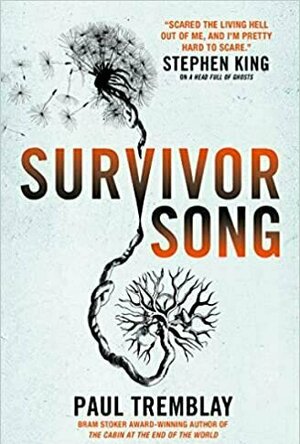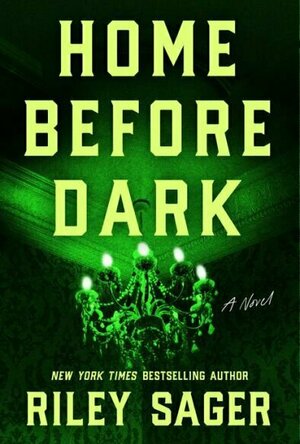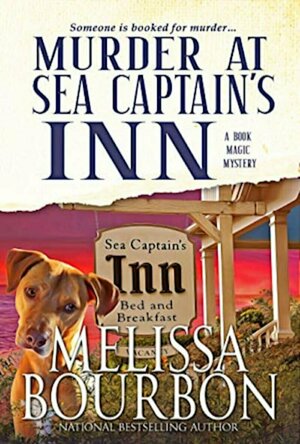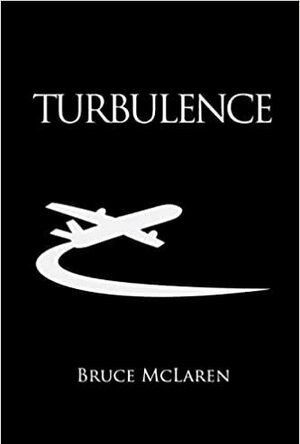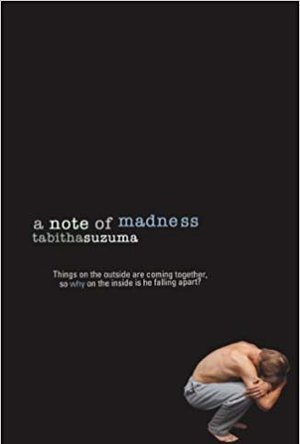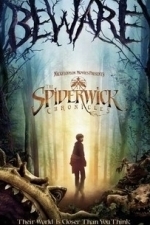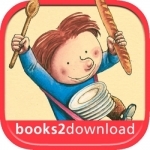
Timo en het toverboek
Book and Education
App
Timo and the Magical Picture book An interactive picture book Timo receives a picture book made by...
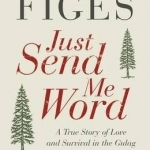
Just Send Me Word: A True Story of Love and Survival in the Gulag
Book
From Orlando Figes, international bestselling author of A People's Tragedy, Just Send Me Word is the...

Virtues Reflection Cards
Lifestyle and Health & Fitness
App
Virtues Reflection Cards VIRTUES are the essence of who we are. They are the content of our...
Kristy H (1252 KP) rated Survivor Song in Books
Jul 9, 2020
A viral strain of rabies is spreading across Massachusetts. It moves quickly among animals and people, with those being bitten rapidly (think hours) losing their minds and then biting others to spread the disease. Hospitals are overwhelmed. People are under quarantine, with packets of vaccine being dropped from the sky to try to control the animal population. Chaos reigns. Dr. Ramola "Rams" Sherman is a pediatrician, about to be called in to help at an overflowing hospital. Before she can, she receives a terrified phone call from her best friend from college, Natalie. Eight months pregnant, Natalie watched an infected man brutally kill her husband--and received a bite while trying to save him. She must get to a hospital--and fast--to try to save herself and her unborn child. She and Rams begin a horrifying odyssey to get Natalie help, traversing a world filled with untold dangers.
"The presentation of symptoms with this new virus is astronomically fast compared to a normal rabies virus."
Okay, first of all, I rarely read horror books like this, but this novel was offered by my Scene of the Crime group, and I had heard such great things about Paul Tremblay. Second, I am trying to avoid pandemic-type reads and, yet, I found myself reading an incredibly pandemic, virus themed book!
However, I have to say, this was a good book! I can't say I enjoyed it, because it was so incredibly stressful that I think my heart-rate and blood pressure were through the roof while reading this thing. BUT, I could not put it down. Tremblay has created an utterly spellbinding book that also happens to be incredibly timely.
The tension in this book completely crackles. There's a virus spreading across the entire Northeast, but Tremblay focuses his action mainly on just Rams and Natalie. Somehow narrowing the story down on the survival of these two (and Natalie's baby) makes the story all the more terrifying and stressful. Their journey to get to a hospital is fraught with danger and blockages at every turn, and you can totally see this as unfolding a movie, with the "zombies" popping out around every corner. It still makes me shiver even now thinking about it.
While this book is creepy and scary, it makes some amazing (and very timely) points on society and its backward viewpoint toward vaccines, fear culture, xenophobia, and more. I found myself nodding furiously so many times. And, of course, it's filled with words that are so familiar to us now--who knew that CDC, PPE, and quarantine would be such commonplace terms?
Overall, while this is a very tense book and it might resonate a bit *too* much right now, it's very well-written. I flew through it--I'm not usually a horror fan, but it was a good balance of scary and humanizing. 4+ stars.
Heather Cranmer (2721 KP) rated Home Before Dark in Books
Mar 26, 2021
After Maggie's father dies, she inherits Baneberry Hall, a place Maggie and her family escaped many years ago when she was 5 years old. Maggie's father has written a best seller about their stay in Baneberry Hall, but Maggie doesn't believe it. However, when she returns to Baneberry Hall, strange things start happening...things that Maggie's father wrote about in the book. Could it be ghosts or is Maggie just imagining things?
The plot of Home Before Dark is certainly intriguing. However, the first three quarters of the book were a bit too slow of a pace for my liking. I only kept reading because I was hoping the book would get better. My patience was rewarded in the last quarter of Home Before Dark when the pacing sped up, and I couldn't put this book down. I kept trying to figure out if Maggie was experiencing a haunting and who the ghosts could be. Home Before Dark has a great plot twist (that I didn't see coming). Even its plot twist had a plot twist which was exciting! I also thought it was pretty cool how Home Before Dark reads as two books since we get to read the book Maggie's father wrote as well as what is happening to Maggie in the here and now. Both stories flow together smoothly. At the end of the book, my jaw was left on the floor after what all had happened. All loose ends are tied up nicely, and there are no cliffhangers.
I enjoyed the characters in Home Before Dark. Each character was fleshed out well and had enough backstory where it was easy to picture each individual one. I enjoyed reading about Maggie. Her skepticism was a nice touch, and her thought process was interesting. I could totally relate with her wanting to know if her father's book was actually true and wanting to find out the mystery of why her family actually left Banebury Hall when she was 5 without taking any belongings. I also loved reading about Maggie's father and her mother Jess through Maggie's father's book. (I felt like their story was a bit more interesting than Maggie's.) I get why they did what they did many years ago even if I didn't agree with what they did.
Trigger warnings for Home Before Dark include violence, death, murder, talks of suicide, attempted murder, some profanity, and the occult.
Although Home Before Dark starts out slow, it definitely makes up for it towards the end. With an intriguing plot and well written characters, Home Before Dark is a book worth reading. I would recommend Home Before Dark by Riley Sager to those aged 16+ who are after a creepy thrilling read.
Shelle Perry (66 KP) rated Murder at Sea Captain’s Inn in Books
Jul 23, 2021
In Murder at Sea Captain’s Inn, Pippin and her brother Grey are the latest descendents of the Lane family. Pippin is desperate to find a way to break the family curse if only to save her brother from his seemingly preordained fate. She has turned the house they inherited from their parents into a bed and breakfast and she has her hands full with the grand opening. It is bad enough that one of her guests has turned up dead, but as Pippin gets pulled into investigating, it turns out that the woman may have known something about the curse that has been following the Lanes for the past two millennia.
Melissa Bourbon knows how to tell a story. Honestly, that is all that needs to be said.
There is so much going on in the 250+ pages of this book. Pippin has picked up her father’s investigation into her lineage and is learning to have confidence in her role as a biblimancer. That narrative alone is fascinating. I could read a 500 page book on that aspect of the story alone. The Lane women are so genuinely interesting, I keep coming back for more.
I truly enjoyed the tidbits of archeology and history laced into the plot. With a budding archaeologist in the house, I admit to being just a little too excited to read about optically stimulated luminescence in the course of a mystery novel. I mean that doesn’t just pop up in a typical conversation. I also love that I didn’t see whodunnit until it was explained. When Pippin figured it out, I was hoping she was wrong because I just didn’t want to believe it, but of course it was there in the clues the whole time. How did I miss it? Simply put, the clues are so subtly woven into the story that it is easy to forget that we, as readers, are here to help Pippen solve a mystery.
I do think this reads well as a stand alone if this is your first experience with the series. Still, book 1 and its prequel are so worth the effort. The story isn’t all told yet, so I will be back for more.
⭐⭐⭐⭐⭐
Rating: 4.5 out of 5.
I received an advance review copy for free through Great Escapes Virtual Book Tours, and I am leaving this review voluntarily
BookInspector (124 KP) rated Turbulence (The Wanderer #1) in Books
Sep 24, 2020
I don’t normally like philosophical reads, but in this one, author disguised and blended in these parts very creatively. I do love to learn new things and facts, especially if it is related to history, and for me, all these parts were an absolute joy to read. I really loved different settings chosen for this novel as well, as I got a glimpse of different cultures and different countries. I really liked that author chose different story variations in this book, sometimes he used to get lucky with the women he met and sometimes he missed the chance or chose not to get involved. It was refreshing and very believable changes of course and I was very interested of what the next story will bring. My absolute favourite was the religious discussions. I think the author will make many Christians unhappy, but I loved all the supporting historical facts he mentioned in this book regarding religion. I don’t even have to mention any research for this book, the author has a PhD degree in history/archaeology so I trust all the information he provided. :)
The writing style of this novel is very poetic and absolutely beautiful. B. McLaren has an amazing way of portraying different topics and uniting them all in a wonderfully flowing story. I do have to throw in a disclaimer that there are some discussion and scenes regarding sex and alcohol, so this book is not suitable for young readers. The chapters were quite long for my liking, but they passed quite quickly because I used to get very absorbed in the story itself. I liked how the author decided to end this story and I think it rounded up this book well. So, to conclude, I had a great fun reading this funny, philosophical one man’s journey through life and his encounters with different women all over the world. I learned a lot, so if you like history, travelling and a little bit of philosophical discussion I think you will enjoy this book :)
Eleanor Luhar (47 KP) rated A Note of Madness (Flynn Laukonen, #1) in Books
Jun 24, 2019
I didn't realise this was the first of two books, but it reads fine as a standalone novel anyway. I hadn't intended to read on, but I just love Suzuma's writing too much. I've reserved the next novel at the library.
I found this quite similar to Hurt in a couple of ways; firstly, the protagonist is a young male who is experiencing something very unpleasant but important to talk about. Instead of rape, as in Hurt, this time the topic is mental health. Flynn's got the whole world at his feet, but suddenly he's up all night composing or drowning himself in alcohol and aspirin. Everything feels wrong and he doesn't know why. His flatmate, Harry, calls Flynn's brother in to help. He's a doctor and soon realises Flynn needs proper help. After one incorrect diagnosis and several relapses, Flynn finally feels the world go back to normal.
Although the ending is typically "hopeful" (which you can only expect, really - it's not gonna be very helpful for kids to read stories where you never recover from your mental illness) it still manages to be realistic rather than overly positive and optimistic. For example, Flynn is offered a couple of amazing experiences in this book, the first of which he is determined to take. But he doesn't, because his health declines so much. I can tell you how horrible it is when you have your heart set on something but your mental health holds you back... Sometimes you just can't do it. Flynn's health gets so bad that his brother takes him away on the eve of his big concert (he's a music uni student).
There's also a romance line through this, which I gather will be furthered in the next book. Flynn doesn't pay much attention to it - doesn't even notice it - due to his condition, until it's too late and he's messed it up. Jennah is an old crush of his, recently parted from her boyfriend for a mysterious "other guy". Flynn just doesn't put 2 and 2 together, though, and assumes she could never love him because he's so hopeless and talentless and depressed. Things really get bad when they argue about it during one of Flynn's relapses, and she goes missing for the night. I must admit that I immediately feared the worst after what happened in Hurt, but it was eventually resolved. I am very interested in reading how Flynn's mental illness impacts his relationship in the future.
This is a great topic to address, especially in males. The episodes may be a little exaggerated but then I suppose that is how some people experience it. It's different for everyone. I really appreciate the age chosen, too, because people often forget that mental illnesses don't only develop when you're twelve or thirteen. 5 stars; a fantastic book and a fantastic author.
Darren (1599 KP) rated The Spiderwick Chronicles (2008) in Movies
Oct 2, 2019
Performances – Freddie Highmore takes twin roles here and handles them both very well showing how he can be the smarter kid and the adventurous one too. Mary Louise Parker in the parental role works well as we need her to bring the serious side to the story now. Sarah Bolger is strong too needing to be the strongest member of the children.
Story – The story takes three siblings into a battle with goblins with fantasy creatures being used to guide the way in this battle. This will bring the broken family back together, well back to the level they are going to need to get used too. The scale of the book doesn’t give the story enough credit because it feels like this book has created a massive world only for us to get a snippet into everything. this story doesn’t re-invent the wheel because we can see the formula unfold without needing to guess to much on just how thing go on. We do deal with a big family change which should be the focal point through the film too.
Adventure/Fantasy – The adventure side of the film takes the family into battle against the creatures of the forest which are invisible to most of the world, this plays into the fantasy side too because of the creatures we see at war.
Settings – The film takes the family to a new house that is in the middle of the forest, which shows us the finical change the family must take, as well as the adventures waiting in the forest for people to experience.
Special Effects – The effects in the film are strong for the most part because we get to see the different creation looking like they would fit in the normal world.
Scene of the Movie – Come with me.
That Moment That Annoyed Me – Not getting a full grasp of the scale of the fantasy world.
Final Thoughts – This is a fun fantasy adventure that brings the characters into a world which will unite them as they deal with the biggest change of the children’s life.
Overall: Simple and enjoyable.

Period Tracker Lite
Health & Fitness and Lifestyle
App
Period Tracker, the easiest way to track your health! *Now supports HealthKit, 3DTouch, TouchID,...
